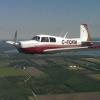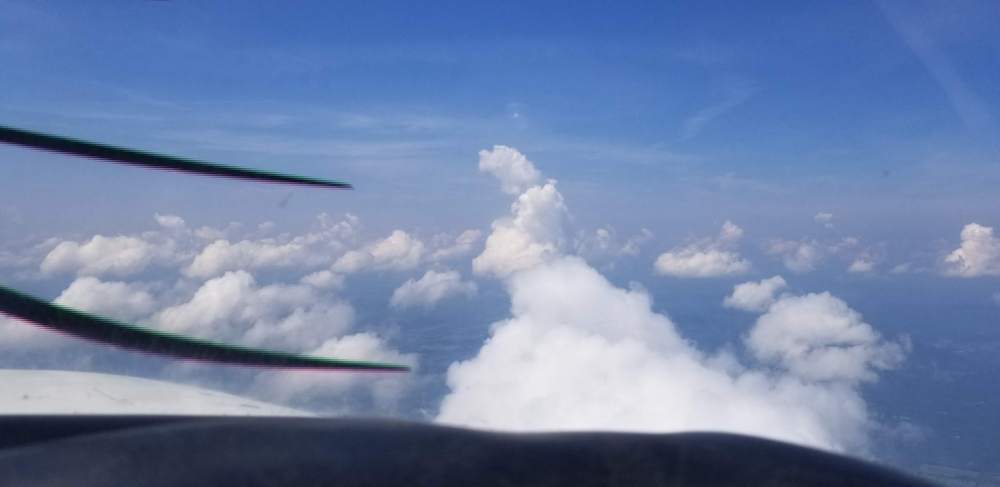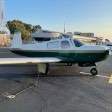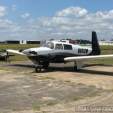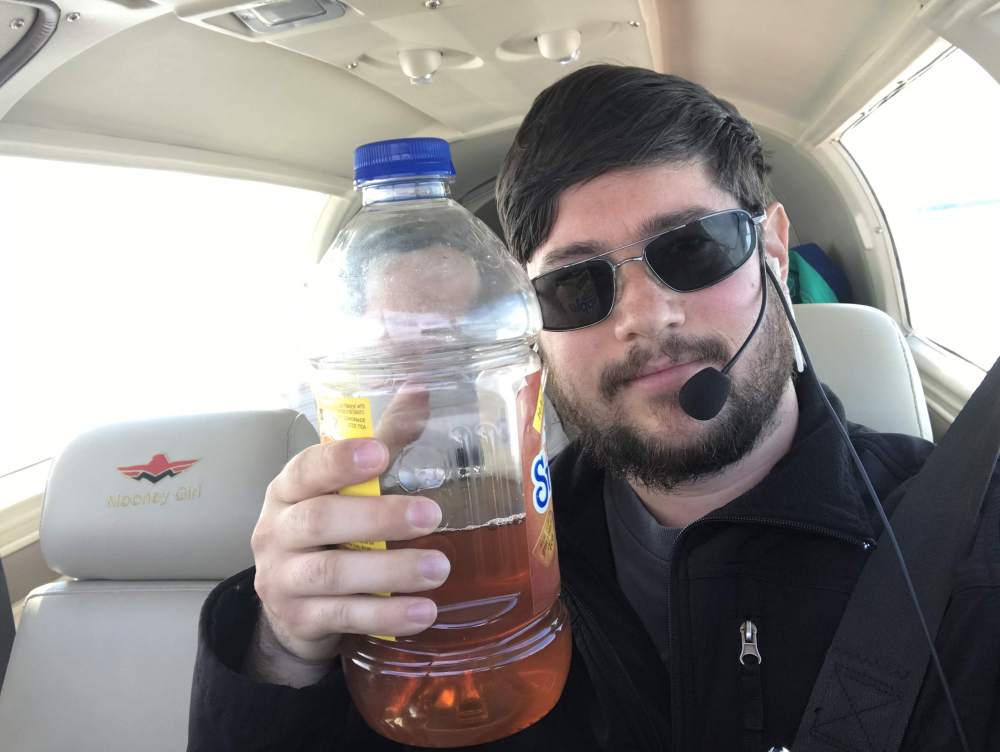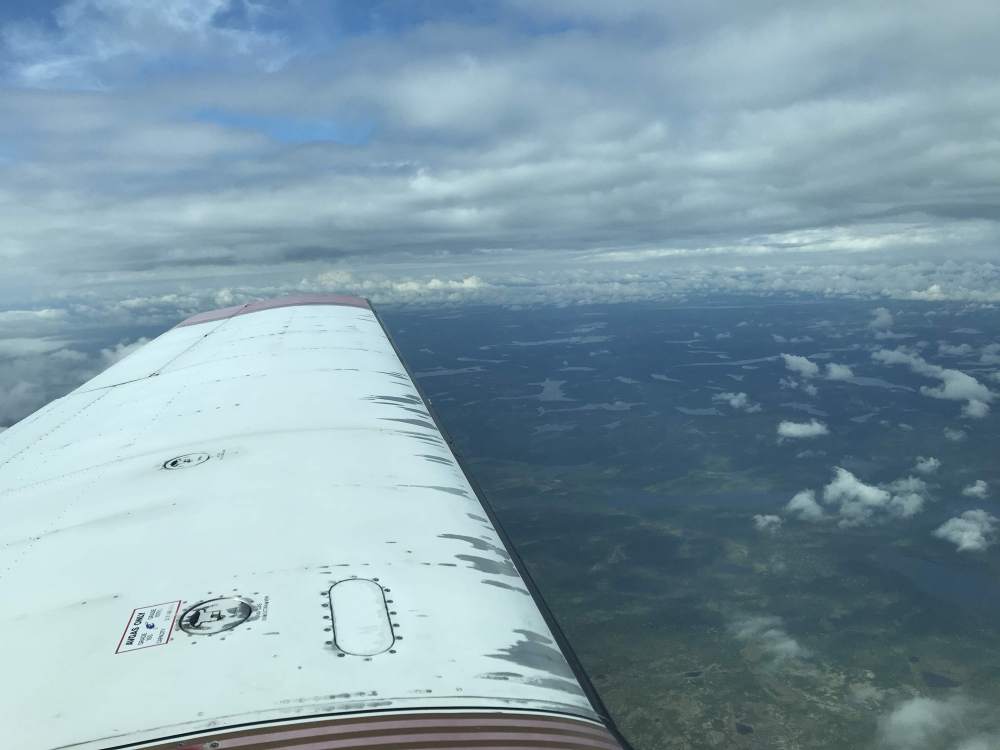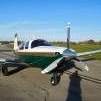Leaderboard
Popular Content
Showing content with the highest reputation on 07/06/2019 in all areas
-
It amazes me that some people don't even realize that the thing they are protesting is the same thing that allows them to protest without repercussion.4 points
-
I’d be more worried the Avionics work won’t be done in time for the annual inspection to begin.4 points
-
Welcome to IFR flying and all the stuff they didn’t teach you during your rating4 points
-
Flying the DC-3 back from an airshow to the museum at KPAE at 2000 feet. Realized we would fly through KRNT’s delta so we gave them a call and requested transit south to north directly over the field at 2000’. Reply came back, “Approved as requested (pause), ah, could we talk you into a low pass?” So is it legal if the tower requests it? And, yes, we accommodated them and added a nice 2g pull up at the end Skip4 points
-
Aviators, This is a great initial read posted last year by the FAA. Bottom line, reducing accident trends is a collaborative effort that I hope we can help contribute to. Bottom line from the article, leading causes of fatal accidents are: 1. loss of control inflight 2. CFIT (controlled flight into terrain) 3. Engine-related (failure, or partial power loss) I plan to pull the NTSB files for all fatal Mooney accidents for 2018, and work backwards. I don't think there are enough final reports out for 2019, but I'll take a quick look. Once I have stats, on Mooney leading causes of fatal mishaps, I'll post them here. https://www.faa.gov/news/fact_sheets/news_story.cfm?newsId=21274 Fly Safe, Safety Forum Mod3 points
-
In 1988, as a newly commissioned officer in the US Army, I swore an oath to "support and defend the Constitution of the United States against all enemies, foreign and domestic; that I will bear true faith and allegiance to the same;" The flag is not a part of the Constitution. The First Amendment is. With that said, I would never personally burn the flag as a sign of protest. But I will support and defend the people who choose to do so because I still honor that oath.3 points
-
Fellow aviators, Welcome to the Safety page dedicated to focusing on safety-related topics that will make us safer aviators. In order to do this, we'll need some ROEs, to follow shortly. I am the safety moderator and as such, I'll need your help keeping the threads in this section on point. Threads that drift from productive safety analysis to non-helpful conjecture, name-calling, etc. will be deleted or closed. The purpose of this section is to use facts, NTSB data, and eye-witness accounts to analyze Mooney accidents so that we can collectively learn and apply to all of us Mooney flyers. General safety article links, safety best practices, safety topics to discuss, are all highly encouraged. I will try to post a safety topics of the month for general discussion and Q&A. Thank you for being a part of this and please PM me suggestions or issues you see. We are better and safer as a collective group than as individuals. I look forward to our discourse! Sent from my SM-N950U using Tapatalk2 points
-
An interesting idea but one that doesn't make any sense to me... I gave a lot of thought to this subject when I installed my Aspen PFD almost two years ago now. Between the PFD and the IFD540 large screen GPS, I couldn't really figure out what the MFD would display that I didn't already have displayed. There's actually a lot of overlap between the depiction of flight data on the PFD and the IFD540, and it doesn't really leave anything for an MFD. It seemed to me that the best reason to spend to install an MFD in the panel is to provide redundancy for the PFD. Of course that requires both PFD/MFD are the same manufacturer. But since the PFD still required an independent AI to back it up, the MFD seemed less important. In the end, I didn't install one for all of these reasons. Fast forward to now, and a combo Aspen PFD/MFD MAX doesn't require any other back up instruments including the AI. And that gives me a reason to add the MFD and in the process remove the AI, VSI, and Altimeter. If I were you, I'd either pull the Aspen and go G3X. Or pull the 430 and go Avidyne IFD440 or better yet, IFD550. Then much further down the road, when there is nothing left to upgrade or improve... add an MFD. Just my $0.022 points
-
My CB solution that will be roundly criticized as irresponsible: Two ipads running Foreflight or Garmin pilot, talking to the panel via a Flightstream 210. Beyond backup utility for the first ipad, adding a second ipad screen had immediately palpable benefits for me during high workload times when IFR.2 points
-
We were supposed to fly from Iqaluit CYFB to Puvirnituq CYPX and then to Sanikiluaq island CYSK for the night. However, due to marginal IFR in low level fog at Sanikiluaq, we decided to go to Cape Dorset CYTE which was fully VFR and then see if the fog would clear at Sanikiluaq later in the day. Landing at Cape Dorset required flying a dog leg next to coastal cliffs and then landing on a 3500 upsloaping gravel runway. At Cape Dorset, FSS turned out to be closed for the weekend, no WiFi at airport, and my phone wasn’t accepting date or making calls so it was difficult to plan the flight further and file a flight plan. Ended up getting hold of a landline and filing direct to Val Dor CYVO which is supposed to be the fuel/lunch stop for tomorrow. Plan was to get moving south and then figure out with FSS in the air which of the enroute villages we could land at and stay the night instead of Sanikiluaq. If none would work out, then we would just move on straight to Val Dor but then miss any further travel opportunities. Just 30mm away from Puvirnituq, I learned from FSS that there were no other acceptable landing options on the way either due to low ceilings or strong crosswinds so we decided to go to Puvirnituq and made a rapid steep descent from cruising altitude to land on the 6000ft gravel runway. Walked into town and luckily managed to get a room on the spot. But not until after a more than one hour wait hoping the receptionist would show up and have rooms available. Tomorrow it’s a 5 hour leg to Val Dor on gas that was barrel pumped at Iqaluit from the 2nd to last remaining barrel and traveling on all day today. After fuel and lunch, a quick hop past Ontario to Ogdensburg to clear customs and dinner and then back to Linden to wrap up this July 4 weekend trip.2 points
-
I've been in a level 5 cell. All this talk about maintaining any particular airspeed is crazy talk. Keeping between the red line and stall is as good as it gets sometimes. I saw the airspeed needle go almost all the way around in a few seconds with no substantial change in attitude or power. My suggestion is to keep the wings as level as possible and the pitch as level as possible. Reduce the power when the airspeed gets high and increase the power when the airspeed gets low. Don't worry about altitude, much. I wouldn't try to turn around, most cells are kind of small, just keep it pointing in the same general direction and you will be out of it in a minute or two. (Knocking on wood and throwing salt over my shoulder) In this encounter I asked ATC to return to the airport. After getting back on the ground, I checked the radar and I actually flew almost all the way through it then turned around and flew back through it again. A life changing event! The outcome was not certain. This was after waiting over 8 hours to depart. I called Flight Service about every 1/2 hour or so. I waited anxiously for the next 1/2 hour old radar picture to come up on the FBO's DOS computer. At about 3 in the afternoon Flight Service and I both agreed that it was doable. After I landed the pilot of the Gulfstream that landed after me came over and chewed me out for flying in that weather without onboard weather radar. Get Homeits can kill! 1992 Bethany OK2 points
-
This is common as you're departing LAX, they'll say maintain 280 knots as you're climbing through 3,000 or so. What they mean is that once you're above 10,000 they expect 280, even though that's not what it sounds like. It's one of those "local knowledge " things.2 points
-
Mike, please tell us where about you will fly southbound... if things fall in line, you might be able to get a Canadian mooneycaravan escort out of the country. Yves2 points
-
Good news is that there are some good planes (it appears) on trade a plane now. Many will need ads-b and other things but look for a bird with good bones: flown regularly and in annual, all ADs complied with. Good luck! Sent from my iPhone using Tapatalk2 points
-
2 points
-
No, they can’t clear you to violate a regulation: 2. "Maintain maximum (or best) forward speed" means the maximum or best forward legal speed. ATC does not have the authority to lift the 250 kias below 10,000 feet speed restriction [91.117(a)]. You cannot be cleared to violate a regulation, and you cannot accept such a clearance.2 points
-
It really depends on what you call it and what happens. If nothing gets bent or broken or irritated the likelihood of enforcement action slim to zero. No one at my drome calls them low passes. Folks will request a “low approach”, particularly when terminating a practice instrument approach. I can tell you that the definition of low varies from pilot to pilot. Our tower doesn’t seem to mind in the least if someone wants to fly the length of the runway at 50’AGL. I’ve seen it done by just about every make you could imagine. Nanchangs, L39s, Barons, even a Citation mustang. I don’t get too worked up about it but then our Class Delta airport is surrounded by dairy farms. I’ve made several low passes over a friend’s private strip. As to the risk, I’d guess it pales in comparison to flying the Fisk into Oshkosh during prime time.2 points
-
A low pass fly by could be considered a go around. Legally all you have to do is stay below the 250 knot limitation. Theres no reg saying its allowed, but theres no reg saying it isnt allowed. Youre allowed to go below 1000ft agl in a densely populated area within i believe it was 5 miles of an airport. Its not the fact of saying that its legal. Its the fact that theres nothing saying its illegal.2 points
-
I think Dev is saying that with or without ANR, we're all screwed. My wife already thinks I need hearing aids. Edit- Since I'm not sure if @EricJ, below, got my odd sense of humor, I'm adding this: Second edit- I just got that I didn't get EricJ's response. Duh. Wife also thinks I'm losing my sense of humor. She might be right on both counts.2 points
-
On my checkride Tuesday, inbound on the LOC 17R approach into KDWH the Examiner covers my GPS and ask now what, how do you identify the fix. I smiled, pointed at the ancient DME dutifully showing distance from the localizer and about 10 mins later, became an IR rated pilot.2 points
-
There's more to it than that. With a tailwind, you'll likely get more glide distance if you use minimum sink instead of best glide. Minimum sink is going to give you an L/d ratio very close to that of Vg, but you will be exposed to the tailwind for a longer length of time and thus be able to extend the glide a little. It's unfortunate that most manufacturers never published a minimum sink speed for our birds, but that's something that's worth doing some of your own testing on. It'll be slower than Vg, and from what I've heard it's generally where you end up if you trim fully aft with power off. In a headwind, of course, increasing speed will reduce your glide angle relative to the wind, but can increase it relative to the ground. It'll never be as good of an angle as Vg with no wind, though.1 point
-
In Manhattan, last month two gay pride flags were burned outside an LGBTQXYZABC.... bar. Trivial!1 point
-
1 point
-
“Canine sex in vicinity of airport at all times, ctc UNICOM for removal.” This is why you check the A/FD!1 point
-
You do realize that flightradar24, flightaware, ADSB, etc., all report GPS groundspeed? The regs are all based on Indicated airspeed. Even my relatively slow C model almost always has groundspeed higher than IAS, and the gap is often greater at hugher altitudes. For what it's worth, I rarely fly above 10,000 indicated.1 point
-
And, for the final word on what controllers can and cannot do w/r/t speed assignments, here's the appropriate sections of 7110.65. Thanks everyone for helping clarify the matter (And watch those high speed low passes!) Skip1 point
-
Yes, with GDL-39 3D and Garmin Pilot. See https://www.garmin.com/en-US/blog/aviation/new-ads-b-flight-information-service-broadcast-fis-b-weather-products/ Sent from my iPhone using Tapatalk1 point
-
I think my Cessna 140 and I should live in a community called “ I Slip”. It would be very appropriate.1 point
-
1 point
-
Clearly! But back to places Canadians would and should go - I went to Prince Edwards Island last month and it was stunning. I would encourage anyone and everyone to go. Especially those Southerners looking to cut away some of your summer heat waves with respite and Northern sea breeze. Charlottetown is a really cool place too.1 point
-
@Shadrach, I posted the announcement very recently. I'll make it a sticky as the Safety ROEs are to follow shortly. Thanks for the signature recommendation. I am the moderator for the Safety section only. I'm here to help facilitate discussion we can all learn from. I'm always open to suggestions and topics for this section. Fly Safe, Safety Forum Mod1 point
-
Are you really comparing the Boy Scouts burning the American flag the proper way with the way Antifa or other demonstrators burn the flag are trying to achieve the same intent??? Please..... Sent from my iPhone using Tapatalk1 point
-
Stay away from towering Cumulonimbus. Cumulus are popcorn-like and the rate of growth will often dictate their turbulence. Dewpoint and freezing levels are terms to be familiar with. Modern tools that can help in-cickpit are ADS-B, XM WX, Foreflight connected to a Stratus, etc. Lastly, when talking to Center, the earlier you ask for deviations, the better And, as always, when in doubt, wait it out. Sent from my SM-N950U using Tapatalk1 point
-
Even the big Commercial Airliners deviate around large cumulous clouds. If you have them around, then you have unstable weather. I feel most comfortable with the strength of our airplanes, but at 3,000+ pounds they are no match for convective activity that could easily turn into thunderstorms--especially in the afternoon. My solution is to fly in the mornings and be done by noon. If there is frontal activity around, then there is always another day for flying, unless you get antsy and choose to risk your life unnecessarily. Would it be worth it then? Then you may not have another day. Remember Scott Crossfield---and he had thousands of hours as a test pilot. The Instrument Rating is a great rating to have, but for our airplanes it is great for getting through an overcast and flying in stratus with moderate rain. Convective activity in the clouds, NO. Not even the clouds shown in your picture, which definitely should be flown around. As you gain more experience and understand the weather better, then the decision making process becomes easier. At 250 total hours you are definitely not there, yet, as your recently gained experiences shows. I'd keep it VERY conservative. Don Kaye, Nine time Master CFI (meaning 18 years) with both SAFE and NAFI1 point
-
⬆️ Exactly. Most try to impress themselves with a pull up and/or steep turn at the end. Flying down the RW at 20’, but easily WITHIN 500’ (let alone 1000’) of hangars, buildings, other planes, etc) doesn’t seem to qualify for the “other than congested areas” language. Not to mention the houses at either end of the RW.1 point
-
1 point
-
What? I think it's funny that some people who are exposed to large noise and sound energy sources for long periods of time want to blame the thing that cancels the noise. Wut? The net energy incident on your ear with ANR is much less than without it. In an aircraft you don't want the ANR to cancel everything since you want to be able to detect audible alarms, engine noises, etc., enough to be able to respond to them. I think that's why we get ANR (active noise reduction) instead of ANC (active noise cancelling). I've worn some headsets (entertainment headsets in business/first in airliners) that were pretty close to ANC. An attendant got perturbed with me because I'd giggle when she tried to speak to me because I couldn't hear a damn thing but the entertainment audio and it was funny to watch her lips move while she trying to talk to me. You don't want that when outside audible clues can save your butt, so I suspect it is an intentional design decision in aviation headsets to not do as much reduction in the mid-upper frequencies where alarms and warnings and clanking sounds live. So that energy will still come through, and, unfortunately, that spectrum is often where tinnitus lives, too. My tinnitus is around 7-8kHz, precedes my use of ANR, and is well outside the low-mid frequency range where ANR does most of its work in aviation headsets. The signal processing for ANR is in many ways similar to channel equalization for wireless communication systems, so that the bits get through more reliably. It's not anything super-esoteric in the industry, doing a "better" job of cancelling is definitely feasible and is not a limitation of the technology itself. I think it is intentionally held back in aviation headsets so no headset manufacturer gets any fingers pointed at them for losses related to not being able to hear the warning horn that the Trunk Monkey has been released in the cabin. And while I'm at it, if you have tinnitus and somebody tries to sell you something that they claim will cancel it, run far away. That requires feedback from within your skull, so unless it comes with an implant that goes in the part of your brain responsible for auditory sensation, it ain't gonna work. *trips and falls while getting off soap box*1 point
-
1 point
-
1 point
-
A few potentially helpful points from a hearing physiology perspective. - What @Jim Peace is experiencing after flights his their ANR headsets is a temporary threshold shift - a reversible hearing loss from noise exposure. It is a mild version of the temporary deafness experienced by solders after an explosion, which typically also has lifelong hearing effects. - Temporary threshold shifts are a serious business, in that they are not entirely temporary - there is likely some small amount of inner ear damage that is permanent each time, and so these events are cumulatively damaging. -The high frequency sensorineural hearing loss that results from noise exposure first becomes noticeable only after a tremendous amount of inner ear damage has already accumulated. I.e. there is a lot of reserve in the system, so a lot of the initial damage early in ones life appeared to have no consequence at the time. Those rock concerts we went to in high school and college have a price that is not paid until later in life. -Once there is measurable high frequency sensorineural hearing loss, it is critical to use the best hearing protection - any more damage, and the drop off in hearing will be precipitous. This is of course of particular concern when it appears in a younger person. Don't just use the best protection at the gun range but also use it when mowing the lawn, using the table saw, or doing other activities we don't think of as very noisy. -Hearing loss in old age is not inevitable - there are 90 year olds with near normal hearing and others at the opposite end of the spectrum are nearly deaf, despite similar amounts of lifelong noise exposure. Genetic predisposition to hearing loss is common, poorly understood, and plays a big factor. -Those with genetic predisposition are particularly vulnerable to rapid drop-offs in their hearing after the problems first appear - the importance of hearing protection cannot be overemphasized in those folks - protection will slow down the loss but cannot stop it. -Most tinnitus is a direct result of high frequency sensorineural hearing loss - in crude terms, there is brain circuitry used for processing high pitched noise that is normally suppressed by normal function of inner ear hair cells - when some of that hair cell function is lost, a kind of phantom high pitched noise is perceived when it is quiet. Added background noise to stimulate the remaining hair cells is then needed to suppress the tinnitus. I'm not exactly sure what is about ANR that causes a problem, but if it is indeed creating a temporary threshold shift, I would discontinue using it. I have all of the same problems (temporary threshold shifts after flying, chronic tinnitus, high frequency hearing loss appearing in my mid-40s, and a clear genetic predisposition). I also have some clinical level understanding of hearing physiology and am happy to help interpret anyone's audiogram if they want to send me a copy. I personally use Clarity Alofts (same basic idea as Halos) with the fattest earpieces, but I will look into getting the custom molds made at Oshkosh this year. @gsxrpilot do you happen to recall what vendor made yours?1 point
-
Cables do wear... If you see them speed up and slow down while the engine operates smoothly.... they are getting ready to fail... my C got one a while ago... from Spruce... they had two options too short and too long... I went with too long... and it worked for several more years... Things to consider... Clarence’s cable... Clarence’s idea... EI instrument Calling Lasar To See what a proper new cable costs go with the too long version from AS... Many MSers have gone with the individual EI tach... Best regards, -a-1 point
-
My concern would be if someone tried patching the tank from the outside, what other shortcuts have been taken on maintenance.1 point
-
Thanks @LANCECASPER. @Robert Hicks, Robert, PM me the details. I’m available most of the weekend...no specific plans for the holiday, so am happy to help. Steve1 point
-
Cocktail and movie beats flying????? In the Mooney Caravan???? Am I missing something???1 point
-
A month or so ago I got my 340A back from Sandia after it failed in turbulence. I use it for a backup behind a KI256. I have put about 35 hours on the 340A since I got it back. I did a trip to Fairbanks from Denver to confirm its reliability.. I flew in a lot of turbulent weather and the 340A seemed to work. Until this last trip a I had reservations about the 340A which is the same as the KI 300. The remaining question is how well it will direct the autopilot. When the wings are level the 340A might show a few degrees of turn. I am not sure that calibration of roll is warranted. King will have to explain this to me before I buy the KI 300/310. I am sure they will get their act together by OSH but I am not which OSH.1 point
-
Its all in your head..... and ego. That is a reasonable speed for an F. Let it go, enjoy your airplane, and be happy. IF you go throwing $$$ at this it will likely lead you to be more unhappy, because the return will be small. 5 knots either direction is meaningless. You will make or lose time with how efficient you are on the ground and technique.1 point
-
Non-Garmin audio panels don’t get you voice control of the GTN. Sent from my iPad using Tapatalk1 point
-
1 point








